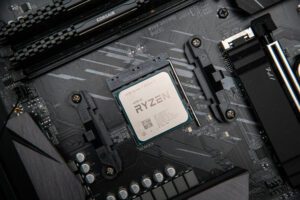In today’s fast-paced digital world, the ability to connect your laptop to a TV opens up a world of entertainment possibilities. Whether you want to stream your favorite movies, share a slideshow with family and friends, or play video games on a larger screen, connecting your laptop to a TV is a simple and convenient way to enhance your viewing experience. In this comprehensive guide, we will walk you through the step-by-step process of connecting your laptop to a TV effortlessly.
Understand Your Connection Options
When it comes to connecting your laptop to a TV, you have several connection options to choose from. Understanding these options will help you select the most suitable method for your specific needs. Here are the most common connection types:
- HDMI (High-Definition Multimedia Interface)
- VGA (Video Graphics Array)
- DVI (Digital Visual Interface)
- DisplayPort
- Wireless Screen Mirroring
Connecting with HDMI
HDMI is the most widely used and convenient method for connecting a laptop to a TV. Follow these steps to establish an HDMI connection:
- Check for an available HDMI port on your laptop and TV.
- Connect one end of the HDMI cable to your laptop’s HDMI output port.
- Connect the other end of the HDMI cable to the HDMI input port on your TV.
- Use your TV remote to switch to the appropriate HDMI input source.
- Your laptop screen should now be mirrored on your TV. If not, adjust the display settings on your laptop.
Connecting with VGA, DVI, or DisplayPort
If your laptop and TV do not have HDMI ports, you can use VGA, DVI, or DisplayPort connections. Although these methods may require additional adapters, the process is fairly straightforward:
- Identify the available video output port on your laptop.
- Connect the appropriate adapter cable from your laptop to the corresponding input port on your TV.
- Use your TV remote to select the appropriate input source.
- Adjust the display settings on your laptop to ensure compatibility and optimal display quality.
Wireless Screen Mirroring
Wireless screen mirroring is becoming increasingly popular as it eliminates the need for cables. Here’s how to connect your laptop to a TV wirelessly:
- Ensure that your laptop and TV are connected to the same Wi-Fi network.
- On your laptop, go to the display settings and select “Connect to a wireless display” or a similar option.
- On your TV, enable screen mirroring or casting mode.
- Select your TV from the list of available devices on your laptop.
- Your laptop screen should now be mirrored on your TV wirelessly.
Troubleshooting Tips
Sometimes, you may encounter connectivity issues or have trouble getting your laptop to display on the TV. Here are a few troubleshooting tips to help you out:
- Ensure that all cables are securely connected.
- Restart your laptop and TV.
- Update your graphics drivers.
- Check for compatibility issues between your laptop and TV.
- Try a different HDMI or adapter cable if available.
Conclusion:
Connecting your laptop to a TV is a relatively simple process that opens up a world of entertainment possibilities. By following the step-by-step instructions in this guide, you can effortlessly enjoy your favorite content on a larger screen. Whether you choose HDMI, VGA, DVI, DisplayPort, or wireless screen mirroring, you now have the knowledge to connect your laptop to a TV and elevate your viewing experience.
Remember to



